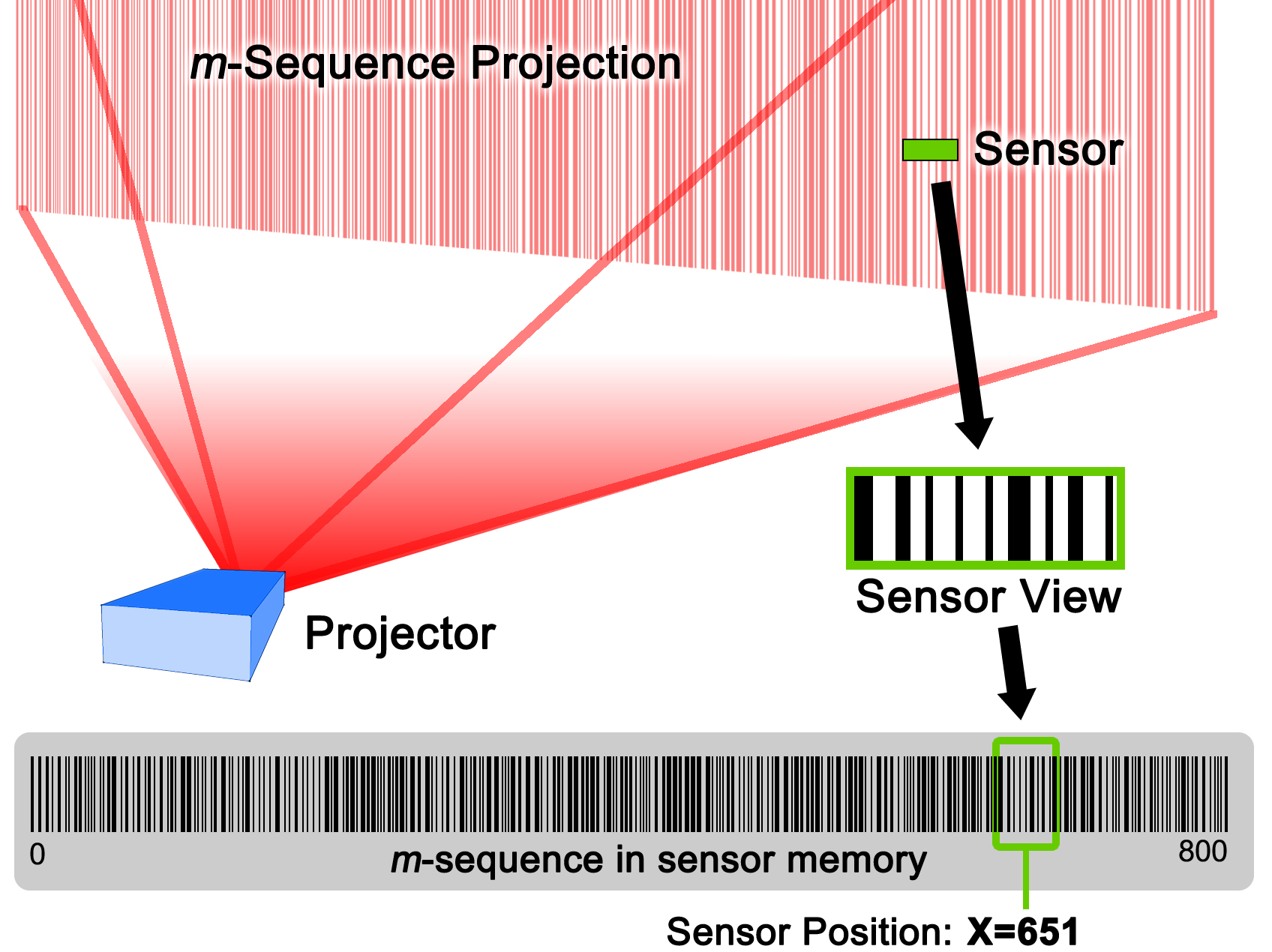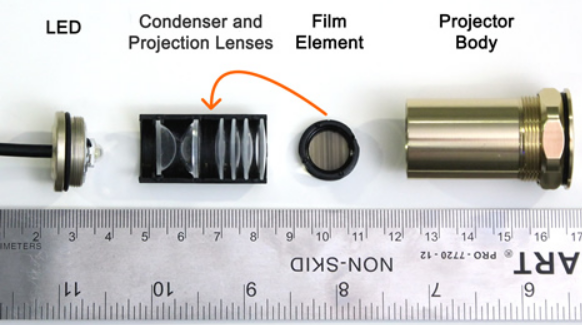Carnegie Mellon-Disney motion tracking technology is extremely precise and inexpensive with minimal lag
Could mostly eliminate lag in existing video game systems, be
integrated into mobile devices; applications include CGI and human-robot
interaction
October 9, 2013

Lumitrack
enables high-speed, high-precision tracking by projecting a
barcode-like pattern, or m-sequence, over an area. A sensor can
determine its position based on the unique portion of the m-sequence
pattern it can detect. (Credit: CMU)
Called Lumitrack, the technology has two components — projectors and sensors. A structured pattern, which looks something like a very large barcode, is projected over the area to be tracked. Sensor units, either near the projector or on the person or object being tracked, can then quickly and precisely locate movements anywhere in that area.
“What Lumitrack brings to the table is, first, low latency,” said Robert Xiao, a Ph.D. student in Carnegie Mellon’s Human-Computer Interaction Institute (HCII). “Motion tracking has added a compelling dimension to popular game systems, but there’s always a lag between the player’s movements and the movements of the avatar in the game. Lumitrack is substantially faster than these consumer systems, with near real-time response.”
Xiao said Lumitrack also is extremely precise, with sub-millimeter accuracy. Moreover, this performance is achieved at low cost. The sensors require little power and would be inexpensive to assemble in volume. The components could even be integrated into mobile devices, such as smartphones.
[+]
Many approaches exist for tracking human motion, including expensive,
highly precise systems used to create computer-generated imagery (CGI)
for films.
Compact static projector uses a light source, focusing optics, and image source to emit a fixed pattern (credit: CMU)
.
.
Though Lumitrack’s developers have targeted games as an initial application, the technology’s combination of low latency, high precision and low cost make it suitable for many applications, including CGI and human-robot interaction.
“We think the core technology is potentially transformative and that you could think of many more things to do with it besides games,” Poupyrev said.
A key to Lumitrack is the structured pattern that is projected over the tracking area. Called a binary m-sequence, the series of bars encodes a series of bits in which every sequence of seven bits appears only once. A simple optical sensor can thus quickly determine where it is based on which part of the sequence it sees. When two m-sequences are projected at right angles to each other, the sensor can determine its position in two dimensions; when multiple sensors are used, 3D motion tracking is possible.
(¯`*• Global Source and/or more resources at http://goo.gl/zvSV7 │ www.Future-Observatory.blogspot.com and on LinkeIn Group's "Becoming Aware of the Futures" at http://goo.gl/8qKBbK │ @SciCzar │ Point of Contact: www.linkedin.com/in/AndresAgostini
 Washington
Washington